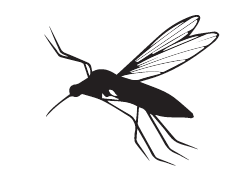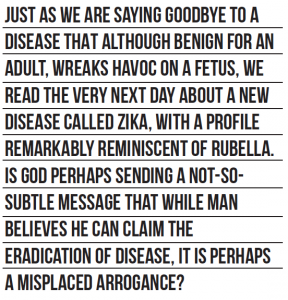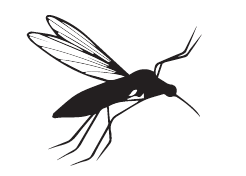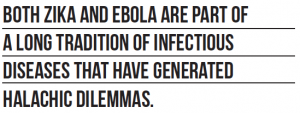Zika in Halachah
 Last year, in the pages of this journal, we explored the unique halachic issues related to Ebola, a highly contagious and fatal disease.1 The article was accompanied by a photo of me wearing HAZMAT protective gear. The procedure of putting on the gear is called to “don,” and to remove it (ironically a much more complicated process) is called to “doff.” At the height of the Ebola scare, I was doing a “doff” a day. It gradually tapered down to a “doff” a week, and then a “doff” a month. I am happy to report that I am no longer doing the “doff” at all. At least for now, the Ebola scare has dissipated. I am further delighted to report that our halachic discussion about whether one should perform CPR on an Ebola patient has remained hypothetical. This disease, however, is by no means gone, and as it will likely resurface again, to Ebola we bid, unfortunately, lehitra’ot (we will see you again).
Last year, in the pages of this journal, we explored the unique halachic issues related to Ebola, a highly contagious and fatal disease.1 The article was accompanied by a photo of me wearing HAZMAT protective gear. The procedure of putting on the gear is called to “don,” and to remove it (ironically a much more complicated process) is called to “doff.” At the height of the Ebola scare, I was doing a “doff” a day. It gradually tapered down to a “doff” a week, and then a “doff” a month. I am happy to report that I am no longer doing the “doff” at all. At least for now, the Ebola scare has dissipated. I am further delighted to report that our halachic discussion about whether one should perform CPR on an Ebola patient has remained hypothetical. This disease, however, is by no means gone, and as it will likely resurface again, to Ebola we bid, unfortunately, lehitra’ot (we will see you again).
As Ebola slips to the periphery of our radar screen, another disease has replaced it front and center: Zika. Both Zika and Ebola are part of a long tradition of infectious diseases that have generated halachic dilemmas, but Zika itself is replacing yet another disease, as we shall see.
» The Halachic Chapter of Rubella (German Measles)
Have you ever been stricken with a case of rubella or seen a case of this disease? If you are roughly in your sixties or older, the answer will likely be yes, while for those younger, the answer will be negative. Rubella is a relatively benign disease that can cause a fever, rash, headaches and eye redness and is spread from person to person through coughing or sneezing. While a mere nuisance for most adults, it is extremely dangerous for a fetus. If contracted during pregnancy, rubella can possibly cause deafness, blindness, heart disease, microcephaly (small brain) and tragically even death for the fetus. When rubella epidemics were common in the mid-to-late twentieth century, a number of halachic issues arose.
» Abortion
One challenging halachic issue was whether abortion could be considered for women who were exposed to or contracted rubella in pregnancy. It is important to note that many of the manifestations of congenital rubella are not anatomical, and while ultrasound did exist at that time, albeit in a less sophisticated form, it would not necessarily have revealed any abnormality.
This discussion needs to be placed in the context of the broader halachic analysis of the prohibition of abortion.2 The nature of the prohibition of abortion is a matter of rabbinic debate, with the classic polar extremes represented by Rabbi Moshe Feinstein, zt”l, who forbids abortion for any fetal indication, such as Tay-Sachs, or as in this case of rubella, and Rabbi Eliezer Waldenberg, who allows abortion for limited cases of fetal disability, which could include rubella.
 To give us a sense of the magnitude of the epidemic, according to an account from the rabbinic court of Rav Shmuel Vozner (1913-2015), over 1,000 cases were presented to the court requesting abortion. The court prohibited abortion in every single case (consistent with the general approach of Rabbi Feinstein). As a postscript, it is further reported that in all the cases, save one, no harm befell the subsequent children. As this is an anecdotal account, absent any details of the cases, we cannot know whether the women had confirmed cases of rubella, and if so, during which trimester. In any case it is a remarkable number.3
To give us a sense of the magnitude of the epidemic, according to an account from the rabbinic court of Rav Shmuel Vozner (1913-2015), over 1,000 cases were presented to the court requesting abortion. The court prohibited abortion in every single case (consistent with the general approach of Rabbi Feinstein). As a postscript, it is further reported that in all the cases, save one, no harm befell the subsequent children. As this is an anecdotal account, absent any details of the cases, we cannot know whether the women had confirmed cases of rubella, and if so, during which trimester. In any case it is a remarkable number.3
» Contraception
A vaccine for rubella was developed in the 1960s. To prevent birth defects the medical community recommended vaccinations for all women of childbearing years. The vaccine, however, was comprised of a live, attenuated virus (as opposed to a killed virus), and had potential for the transmission of disease to the woman. As such, it was recommended that women practice contraception for three months after receiving the vaccination. This created a halachic dilemma, as one would be delaying the mitzvah of peru urvu (to be fruitful and multiply). Proper treatment of the halachic topic of contraception is beyond the scope of this article.4 Rabbi Yitzchak Zilberstein responded to this specific query with the following nuanced conclusions:5
1. If the husband already fulfilled the mitzvah of peru urvu, the wife can receive the vaccine.
2. If peru urvu has not been fulfilled, the woman should not receive the vaccine and “shomer mitzvah lo yada davar ra.” (One who preserves and performs a mitzvah will not be harmed.)
3. If the woman is extremely fearful or concerned about the risk to the fetus, she can vaccinate and can use contraception.
4. The husband may also refrain from the mitzvah of peru urvu if the wife is extremely afraid of disease transmission to her fetus.
5. One can rely on a ruling stated in the Ezer miKodesh that peru urvu can be delayed for six months to learn a profession. So too in this case.
» The End of Rubella
In April 2016,6 global health officials declared that rubella had officially been eliminated from the Americas.7 This miraculous feat was accomplished through vaccination (the R of the MMR vaccine stands for rubella); this is why those born in the last few decades have not seen a case of the disease.
» The Beginning of Zika
Behold the following observation: Just as we are saying goodbye to a disease that although benign for an adult, wreaks havoc on a fetus, we read the very next day about a new disease called Zika,8 with a profile remarkably reminiscent of rubella (there are important differences, especially in the mode of transmission). Is God perhaps sending a not-so-subtle message that while man believes he can claim the eradication of disease, it is perhaps a misplaced arrogance? While this interpretation is purely speculative, the observation nonetheless remains.
 » The Zika Virus
» The Zika Virus
Zika (not etymologically related to mazik, a tortfeaser) is a virus named after the forest where it was first identified in Uganda. This mosquito-borne disease has now created an international stir for reasons we shall presently address.
Below are the basics of the Zika virus, highlighting aspects of the disease relevant to the halachic discussion.9
• Zika virus is transmitted primarily through the bite of a mosquito. It typically causes a rash, joint pains, fevers and eye redness and is usually benign, with rare possible neurological effects.
• It can be transmitted through sexual contact, more commonly from male to female, though recently the reverse has been true. (I call this “zikat haba’al,” not to be confused with the term from Yevamot.)
• With the exception of a small area in Florida, almost all of the cases thus far identified in the United States are of travelers from endemic countries. (This, of course, will change.10)
• Zika can cause birth defects, typically microcephaly (small brain) in a percentage of pregnant women. The exact percentage remains unknown, with recent studies showing a range from 1 percent to 13 percent.
• There is no treatment or vaccine for Zika as yet.
» Halachic Issues
Zika shares some of the same halachic concerns as rubella, with some variations and additions. While a detailed expansive analysis of the halachic ramifications of Zika is beyond the scope of this paper, we identify here some of the major issues.11
In an unprecedented move, El Salvador, an area of Zika prevalence, has advised all women living in the country not to get pregnant until 2018 for fear of their contracting Zika through a mosquito bite.12 The Centers for Disease Control and Prevention (CDC) has also less explicitly advised against conception for those living in endemic areas. Even the Pope suggested that contraceptives may be used to prevent the spread of Zika.13 The Jewish community in Brazil, ground zero for the Zika virus, is struggling with these issues.14
There are, in fact, a number of discussions in rabbinic literature about the concept of communal contraception. When Amram, the father of Moshe Rabbeinu, saw that Paro decreed to kill all the male children, he said, “We are toiling in vain,” and he divorced his wife. All the men of Israel then divorced their wives. However, he subsequently reevaluated his decision, remarried and continued to have children. The others followed suit.15 In addition, the Talmud learns from Yosef that one should not engage in marital relations in times of famine.16
Both of these cases were invoked in the modern era when discussing the propriety of contraception amid the horrors of the Holocaust and its aftermath. After World War II, Rabbi Hillel Posek convened a congress of rabbis to address the unsanctioned refusal of many women to engage in the mitzvah of peru urvu.17
 The major concern with Zika is the transmission of the disease to the fetus. Depending on the circumstances of travel to infected areas, the suspected or actual infection, and even the gender of the exposed person,18 the recommendations of the CDC differ. There is concern for the transmission of the virus both through mosquito bites and through sexual transmission. There are many variables that are not yet fully understood, and as a result, the recommendations will surely change over time.
The major concern with Zika is the transmission of the disease to the fetus. Depending on the circumstances of travel to infected areas, the suspected or actual infection, and even the gender of the exposed person,18 the recommendations of the CDC differ. There is concern for the transmission of the virus both through mosquito bites and through sexual transmission. There are many variables that are not yet fully understood, and as a result, the recommendations will surely change over time.
In addition, there are a number of tests for the Zika virus, including tests for active infection and exposure. Any halachic inquiry needs to take into account the current knowledge of the time, and accuracy of the testing as interpreted by medical experts. All questions should be presented to a rabbinic authority for consultation.
» Preventing Conception
In situations where one of the married partners has either been possibly exposed or confirmed to be infected with Zika, the objective is to prevent conception so as not to risk the birth of a severely diseased child.
Issues for consideration:
• Is contraception allowed in general, and if yes, is it allowed in this case?19
• Is abstinence preferable to contraception? This will depend on the length of time involved. If the time period is relatively short, abstinence may be preferred; if the time period is prolonged, contraception may possibly be permitted in consultation with a rabbinic authority.
• Does the type of contraception matter? Most definitely. There are major differences in the types of contraception that are permitted. In this case, a hormonal method (e.g., the pill) may be halachically least objectionable. However, while transmitting the virus to one’s spouse in the absence of conception may not be as much of a concern, if the woman transmits Zika to the man, it may remain in his reproductive seed for a long period and necessitate the consideration of contraception for a longer period.
• Does testing for Zika impact the halachic discussion? Yes; testing, when done with expert medical consultation, may possibly obviate the need for any form of contraception if it can be reliably confirmed that there has been no exposure to or infection with Zika.
» When the Woman is Pregnant
When the woman is pregnant, and contracts the Zika virus, there is a chance for the disease to be transmitted to the fetus, though the exact percentages remain unclear. A pregnant woman (or one in the age of fertility) should clearly avoid elective travel to endemic areas, due to the potential sakanah (danger) to the fetus.20
Due to the concern of sexual transmission, if the man is exposed or has acquired Zika, the CDC recommends that the couple should use a barrier method of contraception throughout the entire pregnancy. All the same issues mentioned above would apply here, except in this case, the only medically effective method of contraception in order to prevent Zika transmission to the fetus is a barrier method. This method is more halachically problematic than other contraceptive forms. There is halachic precedent regarding the use of barrier contraception in cases of AIDS, where the concern is likewise the transmission of disease.21 Rabbinic authorities should be consulted. Here as well, testing may obviate the need for any form of contraception.
 » Freezing Reproductive Seed
» Freezing Reproductive Seed
An option that some Olympians exercised was to freeze their reproductive seed prior to travel to Rio, a Zika area. This reproductive seed could then be subsequently used for procreation without the fear of Zika transmission.22 There is much to discuss here from a halachic perspective. Egg freezing for women has become much more common recently and is permitted and even encouraged by a number of rabbinic authorities in certain situations, though this specific case has not been addressed.23 The different mechanism of transmission for the Zika-infected woman and the required waiting period for conception would need to be considered. Freezing of sperm is halachically more problematic, especially for the unmarried man.24 It is unlikely that such a practice would be sanctioned for men traveling to Zika-infested areas.
» Abortion
The issue of abortion in cases of Zika would be similar in concept to cases of rubella. The rabbinic authorities, such as Rav Moshe, who forbid abortion for any fetal abnormality, would similarly forbid abortion in this case; those who allow abortion in cases where a fetus would suffer from a severe disability would consider the possibility of abortion here. Questions that would need to be addressed for cases of Zika would include:
• Is exposure to the virus enough to consider abortion, or is documented maternal infection required?
• Even if the mother is infected, would anatomical evidence of fetal infection (such as an ultrasound showing microcephaly) be required to entertain the possibility of abortion? This is only possible later in pregnancy.
• How does the statistical likelihood of fetal Zika infection with maternal disease impact the halachic equation regarding abortion?
• How will Zika virus testing affect the decision?
May we be zocheh that Zika will not be mazik us, and that, with God’s help, a vaccine should be developed,25 or a method to genetically modify mosquitos26 to render all these halachic discussions moot.27 Hopefully one day soon, iy”H, when the question is asked, “have you seen a case of Zika?” we will answer in the negative, just like for rubella.
Notes
1. E. Reichman, “Ebola: A New Disease with an Ancient Tradition,” Jewish Action 75:3 (spring 2015): 62-69.
2. For a review of the halachic issues of abortion, see F. Rosner, trans., A. Steinberg, Encyclopedia of Jewish Medical Ethics (Jerusalem, 2003), s. v., “abortion.”
3. Rabbi Simchah HaKohen Kook, “Abortion and the Treatment of Handicapped Children,” Beit Hillel 6:3 (Tammuz 5745) (Hebrew).
4. See F. Rosner, trans., A. Steinberg, Encyclopedia of Jewish Medical Ethics (Jerusalem, 2003), s. v., “contraception.”
5. Shiurei Torah leRofim, n. 225.
6. Another halachic aspect of rubella is the liability for its transmission. See, for example, a New York Times article by D. G. McNeil entitled, “Rubella Has Been Eliminated from the Americas” (29 April 2015). The article states: “Perhaps the most famous American rubella victim was the actress Gene Tierney. In 1943, newly pregnant, she volunteered to be in a show at the Hollywood Canteen, a film-industry nightclub for American troops. She caught the disease that night, and her daughter Daria was born weighing only three pounds, deaf, with cataracts and with brain damage so severe that she never learned to speak. According to Ms. Tierney’s biography, two years later, at a tennis match, she met a fan, a former member of the Marine Corps Women’s Reserve, who said she had slipped out of a rubella quarantine to go to the Canteen that night.” For an analysis as to whether this woman would be halachically liable, see F. Rosner trans. and ed., Y. Zilberstein, Medical Halachic Responsa (Haifa, 2013): 211-212.
7. D. G. McNeil, “Rubella has Been Eliminated from the Americas, Health Officials Say,” New York Times, 29 April 2015. Smallpox was eradicated from the globe in 1979 and polio from the Americas in 1994.
8. On the history of the discovery, spread and diagnosis of the Zika virus, see J. Waggoner and B. Pinsky, “Zika Virus: Diagnostics for an Emerging Pandemic Threat,” Journal of Clinical Microbiology 54:4 (April 2016): 860-866.
9. Further information may be gleaned from the CDC web site. Due to the infancy of this disease and the continuing accumulation of data, it is likely that the information about Zika will have changed from the time of the writing of this article to the time of publication.
10. To date, I have seen less than a handful of cases of Zika, all of which were from endemic countries.
11. There are many aspects of both the medical and halachic aspects of Zika that will not be addressed in this brief article, including details of the viral identification, the nature of the different types of testing, the gender differences of the CDC recommendations, the statistics of fetal infection in the case of Zika infection for the pregnant woman, the halachic issues of traveling to endemic countries and the permissibility to kill mosquitos on Shabbat.
12. A. Ahmed, “El Salvador’s Advice on Zika Virus: Don’t Have Babies,” New York Times, 25 January 2016.
13. Simon Romero and Jim Yardley, “Pope Says Contraceptives Can Be Used to Slow Zika,” New York Times, 18 February 2016.
14. M. Moreas, “Battling Zika at Ground Zero,” JTA, 7 March 2016.
15. Sotah 12b.
16. Ta’anit 11a.
17. See, for example, Rabbi Y. A. Landa, Shu”t Beit Yisrael, E. H. 152; Rabbi Hillel Posek, HaPosek 23:834-837.
18. The disparate recommendations for men and women derive from medical evidence of the lingering presence of the Zika virus, or its remnants, identified in sperm.
19. See F. Rosner, trans., A. Steinberg, Encyclopedia of Jewish Medical Ethics (Jerusalem, 2003), s. v., “contraception.”
20. This issue of travel involving danger, either as a result of the journey or the presence of disease at the destination, merits fuller treatment. Travel for the purpose of one’s livelihood is another matter. See the classic responsum of Noda b’Yehuda, Mahadura Tinyana, YD 10. Regarding discussions of fleeing during a plague, see Rema, YD 116:5. The Rema himself fled from a plague of cholera and, due to his dire situation, wrote a commentary on the Megillah for his father in lieu of mishloach manot. See the introduction to his Mechir Yayin.
21. See Minchat Shlomo 3:103, letter 16; Shevet Levi 10:238; Assia 61-62, 95ff and 100ff; J. D. Bleich, “AIDS: A Jewish Perspective,” Tradition 26:3 (1992): 49-80, esp. 68-69; G. Freudenthal, ed., AIDS in Jewish Thought and Law (Hoboken, New Jersey, 1998), liv, n. 99.
22. J. Branch, “Among Olympians’ Zika Precautions: Fewer Guests, Frozen Sperm,” New York Times, 15 June 2016.
23. See E. Rybak, “Aging Ovaries and the Age-Old Tradition: Elective Egg Freezing in Jewish Law,” Journal of Halacha and Contemporary Society 63 (spring 2012): 22-50.
24. J. D. Bleich, “Sperm Banking in Anticipation of Infertility,” Tradition 29:4 (summer 1995): 47-60.
25. On the halachic approach to vaccination, see E. Reichman, “What Does Halacha Say about Vaccination?” Jewish Action 69:2 (winter 2008): 10-14 and sources there.
26. J. Achenbach, “Genetically Engineered Bugs to Fight Malaria and Zika? Not So Fast,” Washington Post, 8 June 2016.
27. There is also a halachic question as to whether one can kill a mosquito on Shabbat in a Zika-infested area to prevent it from biting a pregnant woman. If we define this as a case of pikuach nefesh, then the answer will be yes. Further analysis is required.
Rabbi Edward Reichman, MD, is professor of emergency medicine and professor of education and bioethics at Albert Einstein College of Medicine of Yeshiva University. Rabbi Dr. Reichman received his rabbinic ordination from the Rabbi Isaac Elchanan Theological Seminary of Yeshiva University and writes and lectures widely in the field of Jewish medical ethics.
